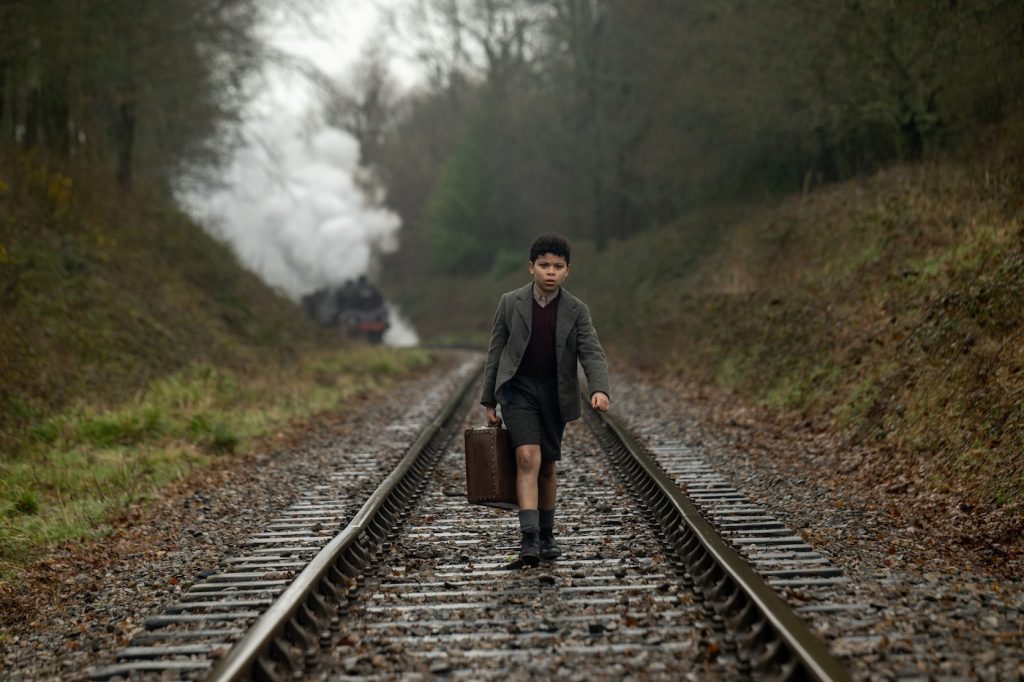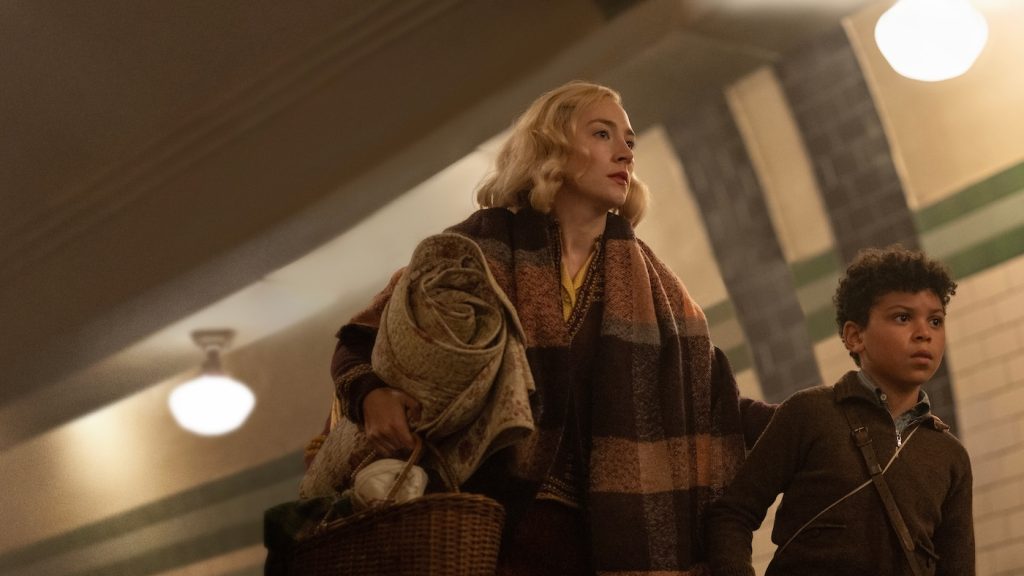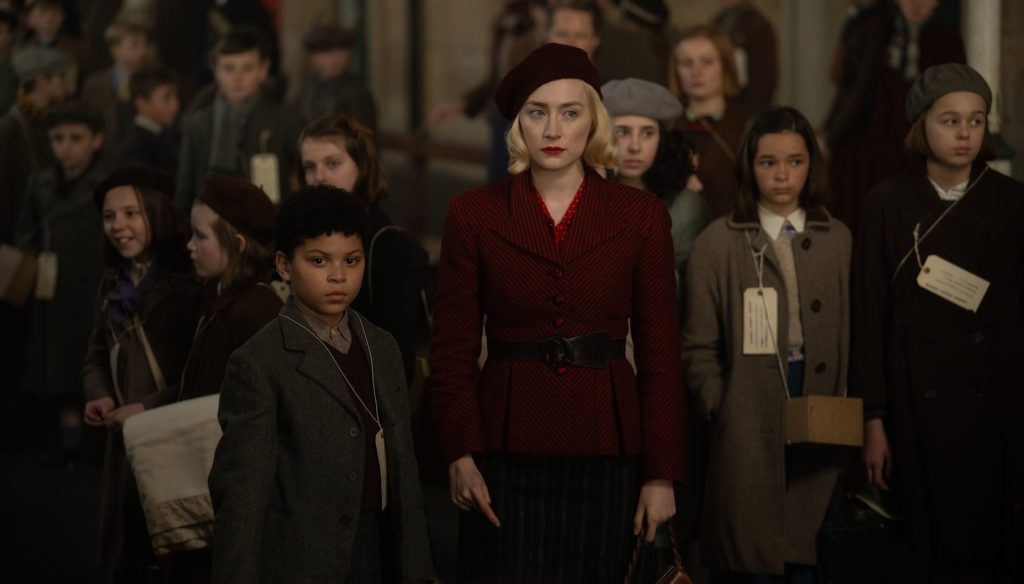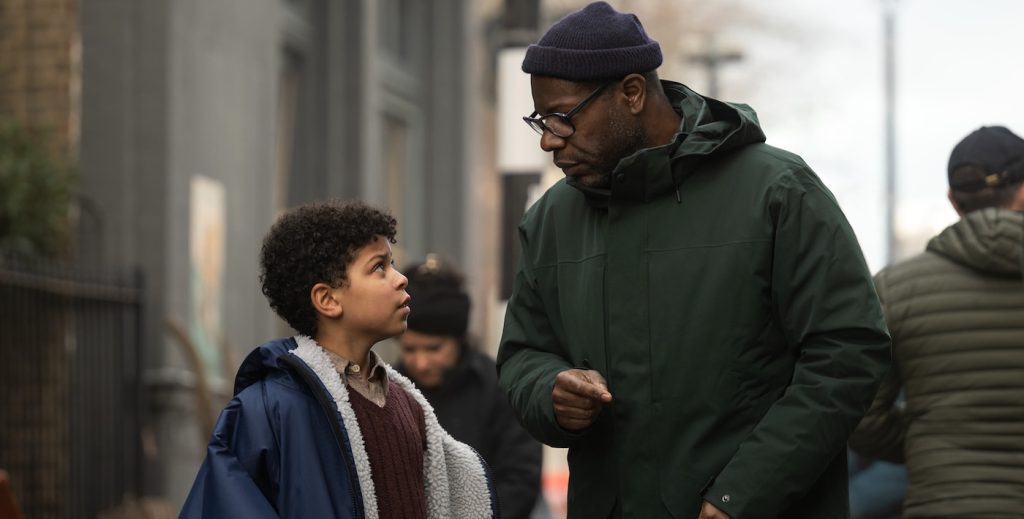How The “Blitz” Sound Team Shook Steve McQueen’s Harrowing World War II Film
While researching Small Axe, a riveting series about the political awakening of London’s West Indian community, director Steven McQueen found a photograph of a young Black boy standing on a train platform holding a large suitcase. The stark image had the director questioning who the child was and what his story was during the London Blitz, a period in World War II when the city was bombed by Germany over eight long months. The image inspired McQueen’s latest film, Blitz, starring Saoirse Ronan as Rita, a widowed mother terrified of what might happen to her only son George (Elliott Heffernan).

The poetically kinetic narrative unfolds as a mother and son trying to reunite after she sends him away from the danger. Visually, we are transported to the harrowing period events through production design, cinematography, and costumes, but elevating the intensity of the film is a dynamic soundscape that immerses viewers in the emotions of the characters.
The sonic journey started with production sound mixer John Casali filming across practical locations and stages in London before the post team guided by supervising sound editors and rerecording mixers James Harrison and Paul Cotterell. The trio discusses how they approached and developed the aural landscape of the moving story and how they hope audiences respond to the film.
McQueen tells a layered story, but at times, it’s told through the eyes of George. How did you want to treat that perspective sonically?
Sound editor/rerecording mixer James Harrison: We spoke very early on about just that play on perspectives. You know, a lot of the film is seen from a nine-year-old’s point of view. And Steve was quite interested in just playing, not going over the top, but just playing with that and portraying the sort of normal sounds of London as being slightly heightened and slightly over the top, as seen through George’s eyes. I think somewhere like the train station is quite a good example of that. When you get in, you get the real hustle and bustle; it’s really quite chaotic. And then the huge slamming doors and the furnace and things like that, just things like that, where a nine-year-old’s just slightly overwhelmed by all of those noises that’s going on around him. So it’s definitely something that we were really playing with.
Sound editor/rerecording mixer Paul Cotterell: Steve was very clear on what he wanted and knew exactly what kind of film he was making. And in that sense, he could be really prescriptive at times, but he’s also completely open to things that he may not have considered. He’s a Londoner, and he tells us stories or memories. For example, he talked about his mum taking him to the markets as a little kid. So he would describe what he’d seen and heard as a little kid around those markets. Those kinds of memories and things gave us an interesting way into scenes.
What was your approach in recording the production sound?
Production and sound mixer John Casali: In the ideal world, you want to boom everything, but the way we shot, there were a lot of radio mics used on most scenes. Steve wants us to approach what we do quietly and not disrupt the actors, especially when we have children involved. And with Steve he demands a quiet set which is fantastic for me and everyone stays focused.
What went into micing Elliott Heffernan, who plays George, with a wireless transmitter?
John Casali: We had some sound shorts to put the transmitter discretely close to his body without him feeling it or the microphone. Fortunately we didn’t have to do much messing around with it. You want to do as little as possible to not distract or take them out of scenes.

Adding to the looming danger are the air-raid sirens. How did the team create them for Blitz?
James Harrison: We went through sound libraries and previous effects we had but realized we needed to get decent recordings of an actual hand crank siren. So we got some manual sirens to record on stage, which I thoroughly regretted after spending two hours turning this thing around in my arm. Oh, I thought I was fit. Then we layered it with electronically controlled sirens so you have many sirens going off at these different points. So we created this 3D layer of things going on in the background with the sirens, the planes, and the panic of the crowds. It’s amazing to hear, especially in Dolby Atmos.
There’s a resonating scene where Rita and Jack sing in a bomb shelter. How did you want to drive the emotion of that sequence aurally?
Paul Cotterell: It’s pretty much all production sound, certainly for the principles. Then we picked up a few lines of ADR of individuals as the camera moved past their faces to emphasize their lips so you felt a bit of contact with them. It took some balancing because it’s a subdued rendition of the song and we wanted the feeling that his room is almost moving.

One of the more heroic scenes takes place in a subway station where water rapidly fills the tunnel, sweeping people away. It’s up to George to get help. How did you approach the production and sound of the scene in post?
John Casali: We were fortunate that Hayley Williams, our special effects supervisor, put all the pumps for the flooding off the stage. So when the water came through, we got a lot of good sound effects of the water coming in so it didn’t feel like we were on the stage. The set was amazing, and it felt like you were in the tube because it was built lower down. So you went downstairs to get to the set, and it felt like we were able to achieve something acoustically that was true to life at that time. The team was in wetsuits for three days, but it felt like we’d really achieved something.

James Harrison: For us, it was a lot of trial and error. Water is very difficult to work with because it’s just sheer white noise. And when you’re trying to get all the different things through the screams and those frequencies and the music playing, the footsteps, it can be hard. The difficulty was trying to shape things while keeping the energy up, keeping it chaotic, and keeping the narrative going. It took a lot of work to carve out those little bits we wanted to poke through. Then, when the music takes over, there’s a lot of ebb and flow, especially with the extras. It was definitely one of the trickier sequences to track and mix.
Paul Cotterell: Steve was really keen on tracking George all the way through the water scene. So we just got layers and layers and layers of breathing and breaths from him. We did that by getting his father to stand before him, and he was kind of wrestling his dad to get all these grunts and noises out. And then, we gave him a lightweight dumbbell and recorded him running with it. It was all really good fun, and he’s a brilliant kid.
In another scene, we’re inside a jazz club with a lively crowd listening to and dancing to a band on stage. How did you approach the production sound?
John Casali: That scene was done with playback because it had to be loud. We wanted everyone to dance and to be consumed by the party feel. And then we had Pro Tools playback of the sirens so everyone could react. It worked well because it really focused everybody.
How did you find moments to Hans Zimmer’s emotional telling score?
Paul Cotterell: We used temp music throughout the process, and Steve would listen to everything, so it was a very full, very dense track, especially during the bigger sequences. Hans had a sound effects track to work against for his score, and for us, it became a question of choice. But I think the sound design and the music from Hans slotted together like a dream really.
James Harrison: I remember getting some of his temp music for the jewelry store scene with George, and I’d done quite a lot of sound design to create this otherworldly effect to make it spooky, and Han’s music fit in like a glove. It was like, oh great, we don’t have anything to worry about; we’re all on the same wavelength.
There’s a touching moment where Rita and George lay in bed, and she asks him to make a wish. In light of that, what’s one wish you’d like the audience to take away from this movie?
James Harrison: Wow, interesting question. For me, one of the things that this film is filled with is little snippets of history, historical elements, and stories like the Café de Paris, that’s based on a club in SoHo. Little details like that can get lost in time if it wasn’t for films, documentaries, and things like that bringing them to the fore again. Hopefully, a few audience members do some research on a character or a place. For us, and probably for Steve, it’s this idea to keep these memories alive a little bit longer. It’s important that we don’t forget.
Paul Cotterell: When we were setting up for a screening in the West End in London on an enormous screen, it was stunning to see its scale and detail, and we hope the sound lives nicely alongside that. So our hope is that audiences can watch this film in a big place.
Blitz is in theaters now.
For more on Blitz, check out this story below:
Featured image: Elliott Heffernan in “Blitz,” now in theaters and premiering globally on Apple TV+ on November 22. Courtesy Apple TV+



